Features of pots with a thick bottom and their selection

Thick-bottomed pots have become part of everyday life and are highly valued by housewives. The demand for such utensils is due to its excellent performance properties and long service life.
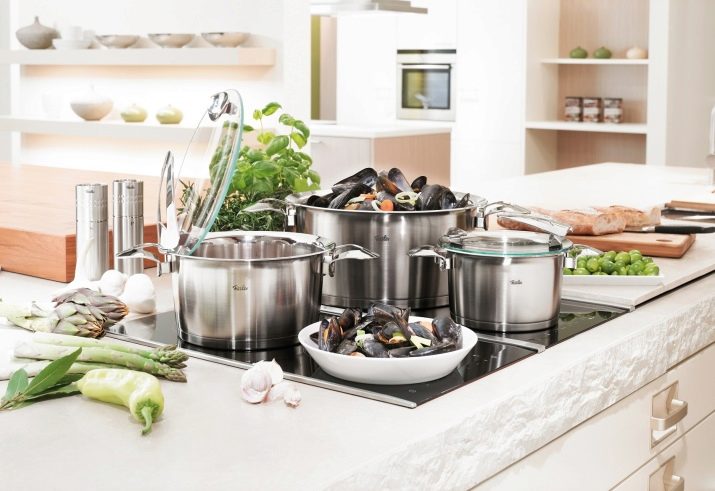
What it is?
A heavy-bottomed saucepan is a type of cooking utensil used for boiling, stewing, and simmering. It is ideal for all types of hobs, including induction models. Most often, the bottom in such products is made using advanced technologies by pressing discs one into another without using a heating method. The adhesion of the elements occurs due to the toughness of the alloy, which causes the compaction of the metal structure.
Such a bottom is called capsule or encapsulated and, in fact, is a multilayer metal structure made of two, three or even five layers.
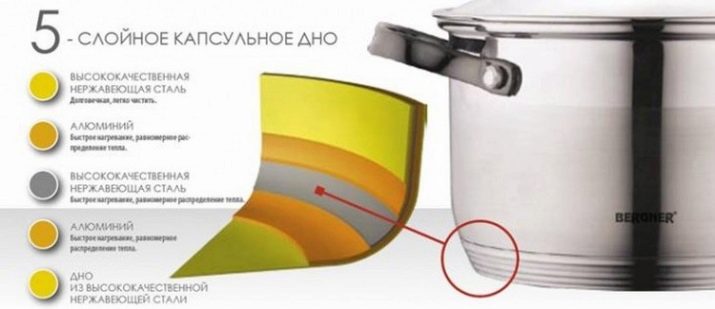
For the production of such a sandwich bottom, a combination of two metals is often used, each of which endows the structure with certain working properties. Thus, most pots have a three-layer bottom, consisting of outer steel and an aluminum middle layer. As for the thickness of the "sole", it, like the number of layers, can be any and range from 5 to 12 mm. but the optimal thickness for home use is considered to be 6-8 mm, which does not overload the total weight of the cookware and does its job perfectly.
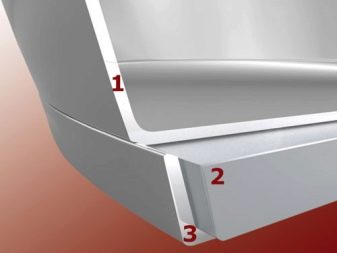
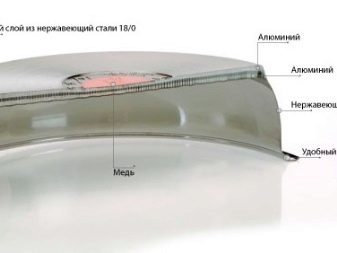
Along with the capsule technology, the thermal method is sometimes used in the production of thick-bottomed pots. In this method, an aluminum disc is attached to a pan with a conventional thin bottom and covered with a steel billet with ferromagnetic properties.Further, under the influence of a pressure of 700 kg / cm2 and very high temperatures, the metal discs are pressed into one layer, forming a blue thermal burn.
Then the junction of the workpieces is sanded, and the pan takes on a presentation. However, as a result of processing the connecting seams on a lathe, the bottom is slightly smaller than the diameter of the pan. Moreover, its overhead nature is clearly visible to the naked eye, and such a product is significantly more expensive.
Therefore, this technology is found less and less, giving way to a more modern capsule method.
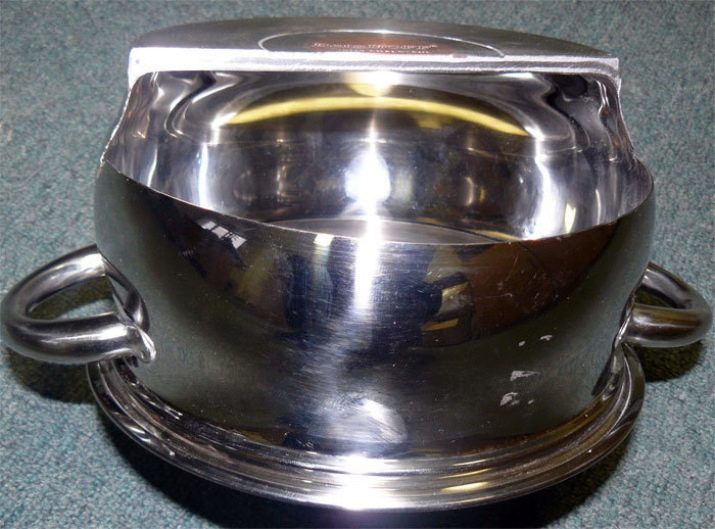
As for the material for making pots with a thick bottom, it can be anything: aluminum, ceramics, steel and cast iron. Cast iron braziers have the best performance, however, due to their too heavy weight and high price, they are not as popular as, for example, stainless steel models. But no matter what material the pan is made of, it is obviously heavier than the model with the usual thin bottom. In this regard, the handles on such a product are made more massive and strong, which is dictated by the requirements of safety and ease of use of the product.
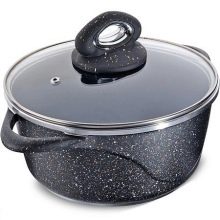

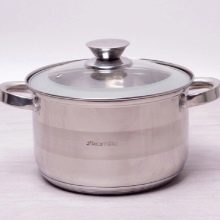
Appointment
Pots with a bottom thickness of more than 3 mm are classified as thick-bottomed pots. They are used for cooking soup and side dishes, stewing vegetables and baking various dishes. Due to uniform heating of the bottom and the ability to keep warm for a very long time such dishes are indispensable for languishing milk and other products that require slow heat treatment.
What's more, heavy-bottomed pots are often used to cook foods of animal origin. with minimal oil and water addition. This becomes possible due to the ability of these products to release, under certain temperature conditions, a sufficient amount of liquid and fat, which is quite enough for cooking in their own juice.
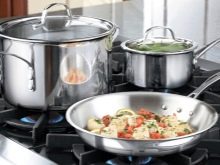

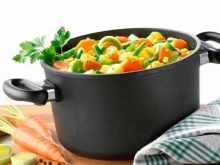
Besides, the thick bottom allows the vegetables to be sautéed directly in the saucepan before cooking the soup, without using a pan. It should also be noted that when cooking in such a dish, you can safely turn off the heat 5-10 minutes before the end of the cooking time. The lidded dish will cook well and become more aromatic. You can do this with cereals, soups and stews. The meat, of course, should be boiled over the fire until the end.
You can also use pots with a multi-layer thick bottom to cook casseroles in the oven.
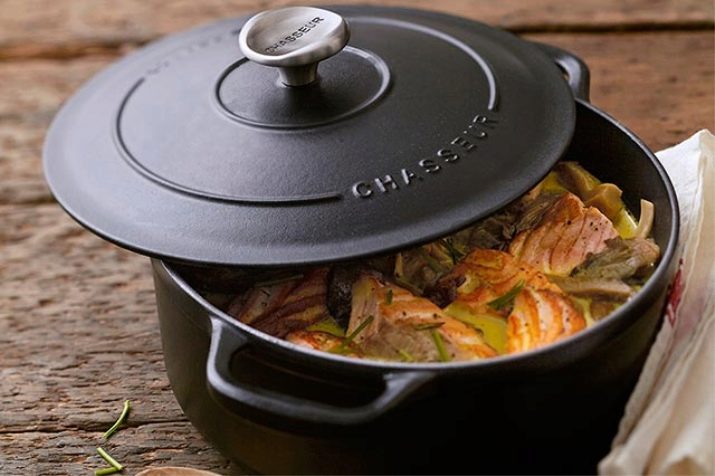
Especially noteworthy are the models with a thick bottom, working on the principle of a water bath. Their hull and bottom consist of two layers, between which water is poured. The liquid goes to the bottom and, when heated, begins to do the work of distributing heat. Its temperature regime is kept within the range of 96-98 degrees, which excludes the likelihood of milk "escape", the formation of foams and porridge burning. These models are equipped with an opening for filling water, a measuring scale on the outer surface of the pan, a whistle plug, a steam lid and heat-resistant handles.
The scope of their application is quite wide, and, in addition to making cereals and boiling milk, includes the preparation of baby food, jams, cheese fondue, pudding, pastry creams, herbal decoction, sauce and liquid chocolate.
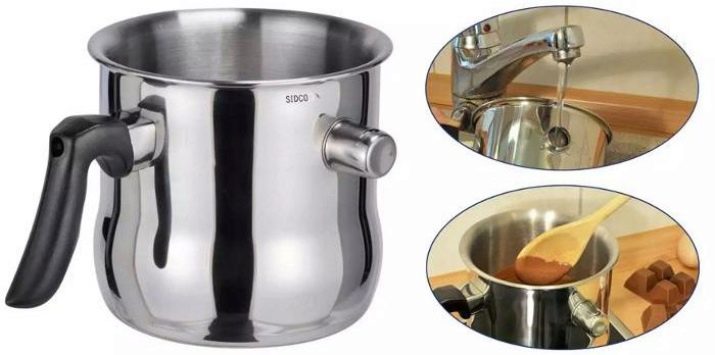
Advantages and disadvantages
Thick-bottomed pots have always been in high demand, which is due to a number of their indisputable advantages over conventional thin-bottom models.
- The use of cookware with a double or multilayer bottom significantly reduces the cooking time, which results in significant savings in gas or electricity.
- A thick bottom, in comparison with a thin one, warms up more evenly, which almost completely excludes food burning.
- Thick-bottom cookware allows you to cook food in its own juice with a minimum of water and oil.This can be especially true for supporters of a healthy diet and people on therapeutic diets.
- Due to the capsule structure of the bottom, most of the nutrients in the food are not destroyed and remain in sufficient volume. This is due to the fact that food is cooked in them much faster, and the necessary substances do not have time to be destroyed by prolonged exposure to high temperatures. Typically, the working temperature inside such dishes fluctuates within 95 degrees and never reaches 100.
- Due to the fact that the multilayer bottom does not cause food burning, the care of such pans is very simple. To do this, it is enough to wash the product with an ordinary dish detergent and monitor the cleanliness of the outer surface of the bottom.
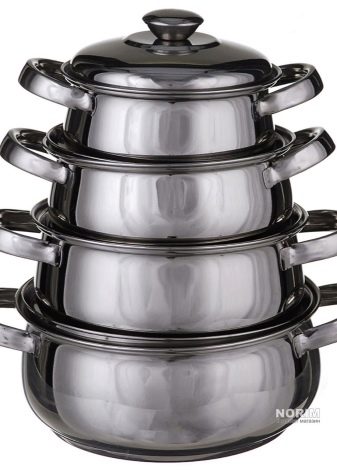
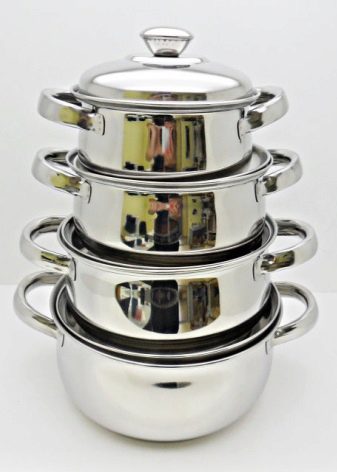
There are not so many downsides to pots with a thick bottom. These include weight, which is slightly higher than that of conventional thin-walled models, and cost, which is also slightly higher. However, these shortcomings can be confidently attributed to conditional, since the ease of use and energy savings when cooking quickly pay off the cost of the model.
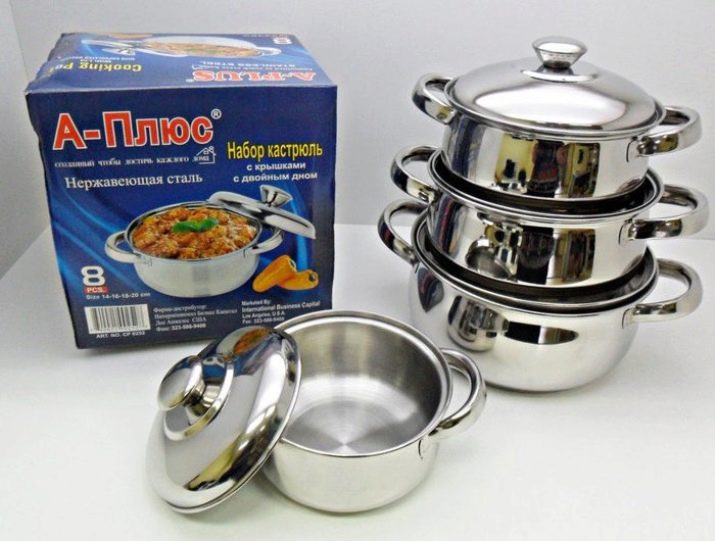
Dimensions (edit)
Thick-bottomed pots come in a variety of shapes and sizes, allowing you to customize your kitchen utensils to suit your needs and preferences. However, it is more advisable to purchase sets of pots, having the same design and colors, differing only in volume.
The sets can include from two to 12 items and consist of pots, the volume of which starts from 0.9 liters and ends with 8 liters, saucepans with a volume of 1.5-6 liters and ladles containing from 1.5 to 2 liters. Thick-bottomed saucepans can be safely used for stewing fish and meat dishes, as well as for cooking casseroles in the oven and simmering milk. Ladles are known to have traditionally small volumes and are used for making sauces, gravy, boiling small portions of milk, and reheating prepared food.
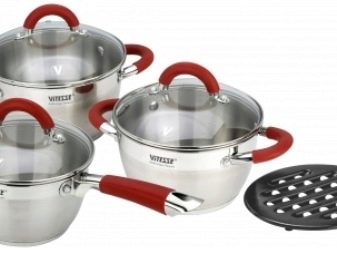
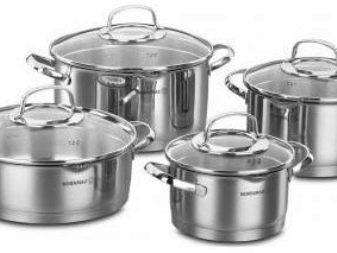
Manufacturers overview
The modern kitchen utensils market presents a wide range of pots with a thick bottom. Below are a number of manufacturers whose product reviews have the largest number of positive ratings and are deservedly in high demand.
- Among foreign manufacturers, a company from Germany should be noted Kaiserhoff, whose production facilities are located in China and Hong Kong. German pots are distinguished by a 5-layer capsule-type bottom and are famous for their laconic design and high quality.
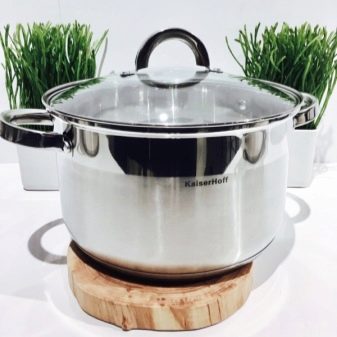

- Danish company dishes Fissman is also popular in our country and is characterized by the presence of additional accessories and fixtures. So, a set of pots with a thick bottom includes practical steamer grates and metal sieves for draining water, and the models themselves are made of food steel with nickel-chromium additives.
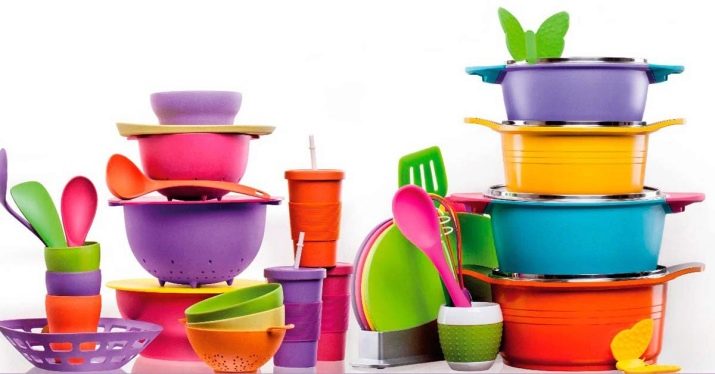
- Company Solingen from Germany is also well known all over the world. She is engaged in the production of pots with a thick single-layer bottom. The lids of the saucepans are equipped with a drain hole, and the set must include a ladle.
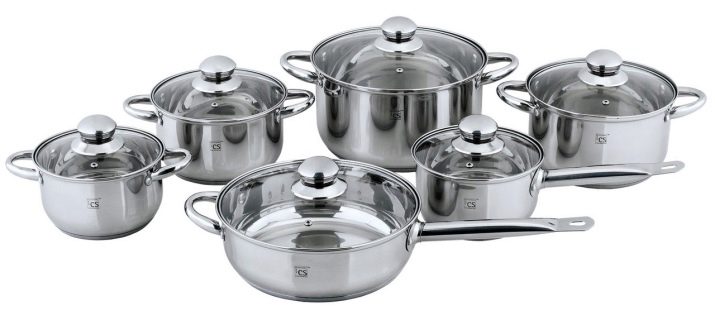
- Well-known worldwide manufacturer Tefal also produces sets of high-quality pots with a thick bottom up to 5 mm, which are in high demand among the population.
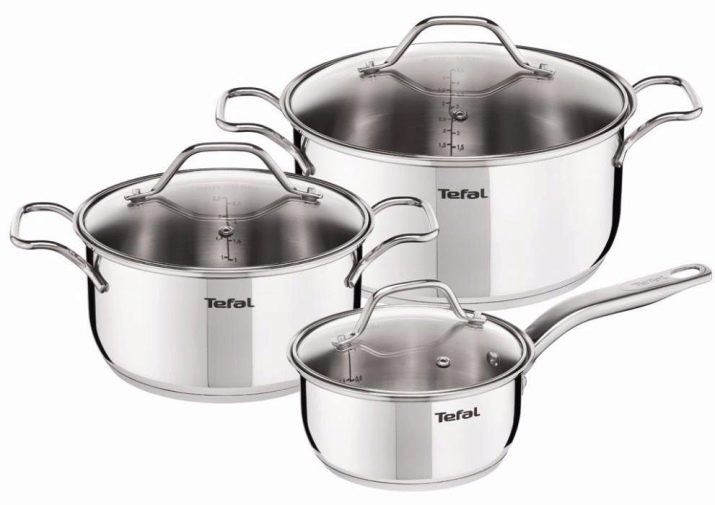
- Among companies from Russia, competitive products are produced by the Gurman plant, also known as "VSMPO-Dishes". High-quality pots with a bottom thickness of 6.5 mm and equipped with welded or riveted handles leave the conveyor of the enterprise. The models are suitable for any type of gas and electric stoves and can be used for baking food in the oven.

- Ashinskiy metallurgical plant products "Amet" also well known to Russian hostesses. The company has launched the production of pots with a thermal distribution triple bottom-sandwich with a volume of 1.5-40 liters.
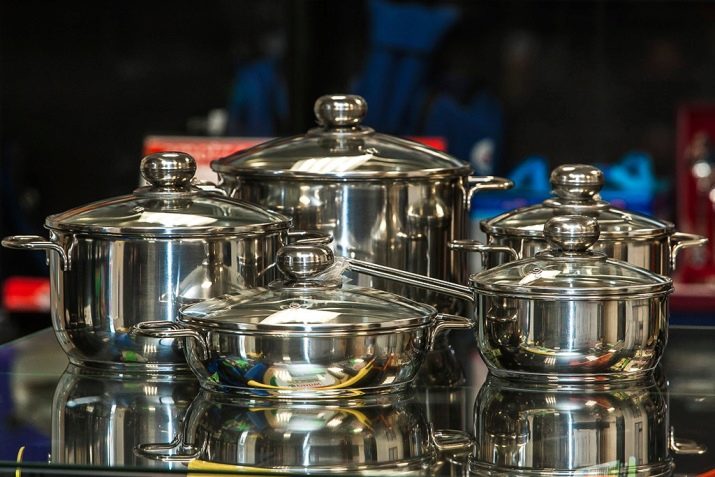
- Russian firm TalleR headquartered in St. Petersburg and manufacturing facilities in China and Korea, it also manufactures thick-bottomed models.The products are equipped with handles with silicone heat-resistant pads and have a bottom thickness of 5-7 mm. The pan has graduated notches, and the body itself is beautifully polished. The smallest model has a volume of only 1.6 liters, plus a bucket is produced in each series.
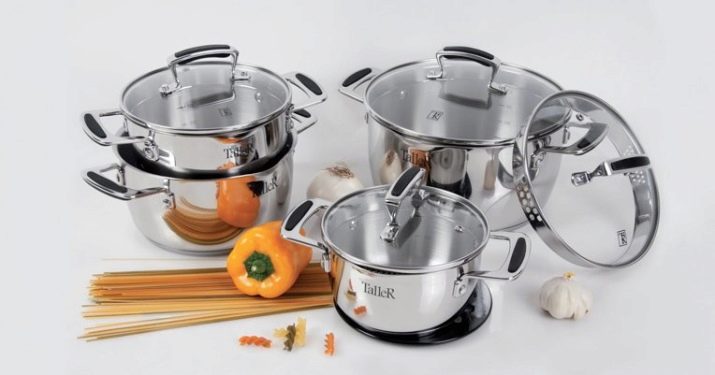
Features of choice
When choosing a saucepan with a thick bottom, you should be guided by the weight of the product. The heavier it is, the more metal is present in the bottom. Due to the rather large weight of the models, it is advisable to pay attention to the fastening of the handles to the pan body. It should be borne in mind that the screw connection can loosen over time, and rivets often oxidize from the inside of the pot.
The best option are products with folded joints: they are durable, reliable and serve for many years.

Another point to look out for when buying is the adherence of the lid to the pan: it should be as tight as possible, and the side edge of the case should not be less than 5 mm. And you also need to watch so that the walls of the pan are at least 1 mm thick and the bottom is at least three... In addition, it should be remembered that the silicone coating of the handles is more preferable than Teflon or wood, since the latter do not tolerate high temperatures well and begin to deteriorate over time.
As for the displacement, it is selected taking into account the number of family members and the frequency of use of dishes. So, for a family of 4, it will be enough to purchase a set with a 4-liter saucepan for soup, a saucepan for a side dish with a capacity of 2.5-3 liters and a 2-liter ladle for porridge. A large 10-liter saucepan will also be useful, which is perfect for boiling jam and preparing various blanks.
For an overview of Borner Premium pots, see the video below.








